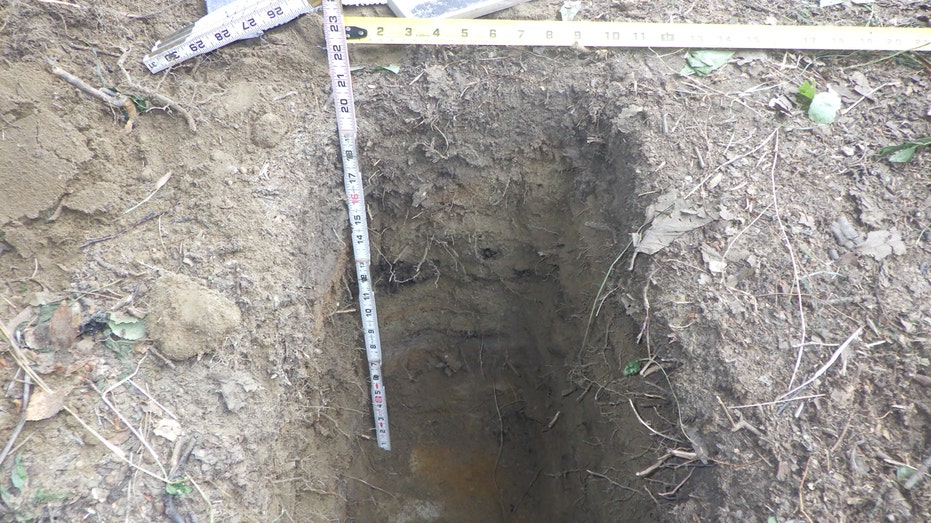
A 1,000-year-old cache pit believed to have been used to store moose or caribou meat has been discovered in Alaska, providing a clue into the food storage methods of the past.
A cache pit dating back about 1,000 years was discovered in Alaska last year, military officials recently revealed — providing a glimpse into the food storage methods of the past.
Archaeologists from Joint Base Elmendorf-Richardson (JBER), Northern Land Use Research Alaska and area tribal councils uncovered the birchbark-lined cache pit along Upper Cook Inlet in June, according to a Dec. 6 news release from the Alaska military complex where the discovery was made.
Cache pits are like root cellars. They were used to preserve fish, meat and berries, archaeologist Elizabeth Ortiz said.
WHY FOOD SAFETY EXPERTS STAND BEHIND THE ‘WHEN IN DOUBT, THROW IT OUT’ STRATEGY
“The caches were dug into well-drained soils and lined with birchbark and layers of grasses to preserve food and are rarely discovered intact,” Ortiz said, according to the news release.
Initial radiocarbon dating revealed that the food storage pit was used about 1,000 years ago.
The pit was found along a trail well-known to have been used by the region’s indigenous Dene people.
It measured about 3½ deep, researchers said.
FOOD ITEM IN VIRGINIA WOMAN’S FREEZER WAS 84 YEARS OLD, STUNS FAMILY: ‘QUITE PERPLEXING’
Dene, or Athabascan, is a language group stretching from the Alaska interior through Canada and into the American Southwest, according to the release.
Athabascans, including Dena’ina and Ahtna people, are Dene speakers.
“This is the oldest known site on the east side of Upper Cook Inlet and further substantiates Dena’ina and Ahtna oral traditions that JBER and the surrounding area have been used for a very long time,” archaeologist and JBER cultural resource manager Margan Grover said.
Most of the site was demolished by the military in 1942, Grover said.
CLICK HERE TO SIGN UP FOR OUR LIFESTYLE NEWSLETTER
Yet the pit and its intact birchbark lining was one of the few undisturbed features left at the Dene site.
Samples of the intact bark lining were used to test the age and contents of the pit.
“Additional radiocarbon and stable isotope tests could yield new and significant information about the history of Upper Cook Inlet,” Ortiz said.
For more Lifestyle articles, visit www.foxnews.com/lifestyle
“We are also testing to determine what types of food were stored in the cache.”
Preliminary findings indicate the cache was used to store moose or caribou meat.
“People came to this area in the spring and would stay through the summer to catch and preserve salmon,” according to the release.
Grover called the discovery “an opportunity for people to understand who the Dene of Knik Arm are and how their ancestors lived on the land that is now JBER and Anchorage.”